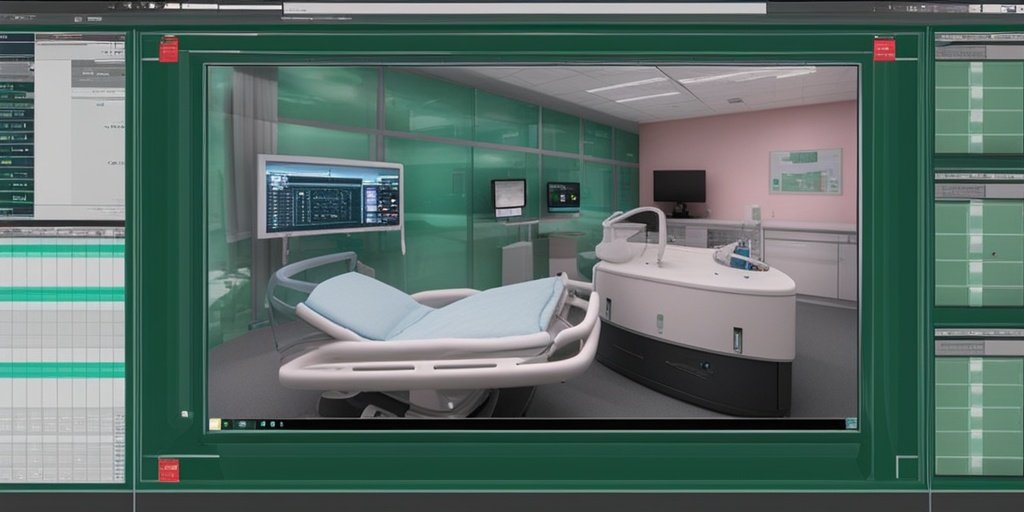⚡ Quick Summary
This study explored the use of deep learning on video data to detect neurologic changes in critically ill infants in the neonatal intensive care unit (NICU). The findings suggest that this innovative approach could provide a scalable and minimally invasive method for neuro-telemetry.
🔍 Key Details
- 📊 Dataset: 282,301 video minutes from 115 infants
- 🧩 Features used: Video data linked to electroencephalograms (video-EEG)
- ⚙️ Technology: Deep learning pose recognition algorithm
- 🏆 Performance: ROC-AUCs for sedation prediction: 0.90, 0.91, 0.87; for cerebral dysfunction: 0.91, 0.90, 0.76
🔑 Key Takeaways
- 📊 Largest dataset of video-EEG in critically ill infants to date.
- 💡 Deep learning can accurately predict neurologic changes from video data alone.
- 👶 Infant pose was predicted with high accuracy across various validation methods.
- 🏥 Continuous monitoring could enhance patient care in the NICU.
- 🌍 Study conducted at Mount Sinai Hospital, New York City.
- 🔬 Funding from notable institutions including the National Institutes of Health.

📚 Background
Monitoring infant alertness and neurologic changes is crucial in the NICU, as these factors can indicate life-threatening conditions. Traditional assessment methods often rely on physical examinations, which can be intermittent and subjective. There is a pressing need for reliable, continuous monitoring techniques that can provide real-time insights into an infant’s neurologic status.
🗒️ Study
The study was conducted at Mount Sinai Hospital between February 2021 and December 2022, focusing on infants with a corrected age of less than one year. Researchers collected video data linked to EEG readings, training a deep learning algorithm to recognize 14 anatomic landmarks in the infants’ poses. This approach aimed to predict cerebral dysfunction and sedation based on the video data alone.
📈 Results
The results demonstrated that the deep learning model could accurately predict infant pose with high ROC-AUC scores of 0.94 for cross-validation and 0.83 for held-out frames. Additionally, the model effectively predicted sedation and cerebral dysfunction, with ROC-AUCs reaching 0.91 and 0.90, respectively. These findings indicate a significant advancement in the use of video data for monitoring neurologic changes in critically ill infants.
🌍 Impact and Implications
The implications of this study are profound. By leveraging deep learning and video data, healthcare providers could implement a continuous and objective monitoring system in the NICU. This could lead to earlier detection of neurologic issues, ultimately improving patient outcomes and enhancing the quality of care provided to vulnerable infants.
🔮 Conclusion
This research highlights the transformative potential of artificial intelligence in neonatal care. The ability to predict neurologic changes from video data alone opens new avenues for neuro-telemetry in the NICU, paving the way for more effective monitoring strategies. Continued exploration in this field could significantly enhance the standard of care for critically ill infants.
💬 Your comments
What are your thoughts on the use of deep learning for monitoring neurologic changes in infants? We would love to hear your insights! 💬 Share your comments below or connect with us on social media:
Detection of neurologic changes in critically ill infants using deep learning on video data: a retrospective single center cohort study.
Abstract
BACKGROUND: Infant alertness and neurologic changes can reflect life-threatening pathology but are assessed by physical exam, which can be intermittent and subjective. Reliable, continuous methods are needed. We hypothesized that our computer vision method to track movement, pose artificial intelligence (AI), could predict neurologic changes in the neonatal intensive care unit (NICU).
METHODS: We collected video data linked to electroencephalograms (video-EEG) from infants with corrected age less than 1 year at Mount Sinai Hospital in New York City, a level four urban NICU between February 1, 2021 and December 31, 2022. We trained a deep learning pose recognition algorithm on video feeds, labeling 14 anatomic landmarks in 25 frames/infant. We then trained classifiers on anatomic landmarks to predict cerebral dysfunction, diagnosed from EEG readings by an epileptologist, and sedation, defined by the administration of sedative medications.
FINDINGS: We built the largest video-EEG dataset to date (282,301 video minutes, 115 infants) sampled from a diverse patient population. Infant pose was accurately predicted in cross-validation, held-out frames, and held-out infants with respective receiver operating characteristic area under the curves (ROC-AUCs) 0.94, 0.83, 0.89. Median movement increased with age and, after accounting for age, was lower with sedative medications and in infants with cerebral dysfunction (all P < 5 × 10-3, 10,000 permutations). Sedation prediction had high performance on cross-validation, held-out intervals, and held-out infants (ROC-AUCs 0.90, 0.91, 0.87), as did prediction of cerebral dysfunction (ROC-AUCs 0.91, 0.90, 0.76).
INTERPRETATION: We show that pose AI can be applied in an ICU setting and that an EEG diagnosis, cerebral dysfunction, can be predicted from video data alone. Deep learning with pose AI may offer a scalable, minimally invasive method for neuro-telemetry in the NICU.
FUNDING: Friedman Brain Institute Fascitelli Scholar Junior Faculty Grant and Thrasher Research Fund Early Career Award (F.R.). The Clinical and Translational Science Awards (CTSA) grant UL1TR004419 from the National Center for Advancing Translational Sciences. Office of Research Infrastructure of the National Institutes of Health under award number S10OD026880 and S10OD030463.
Author: [‘Gleason A’, ‘Richter F’, ‘Beller N’, ‘Arivazhagan N’, ‘Feng R’, ‘Holmes E’, ‘Glicksberg BS’, ‘Morton SU’, ‘La Vega-Talbott M’, ‘Fields M’, ‘Guttmann K’, ‘Nadkarni GN’, ‘Richter F’]
Journal: EClinicalMedicine
Citation: Gleason A, et al. Detection of neurologic changes in critically ill infants using deep learning on video data: a retrospective single center cohort study. Detection of neurologic changes in critically ill infants using deep learning on video data: a retrospective single center cohort study. 2024; 78:102919. doi: 10.1016/j.eclinm.2024.102919